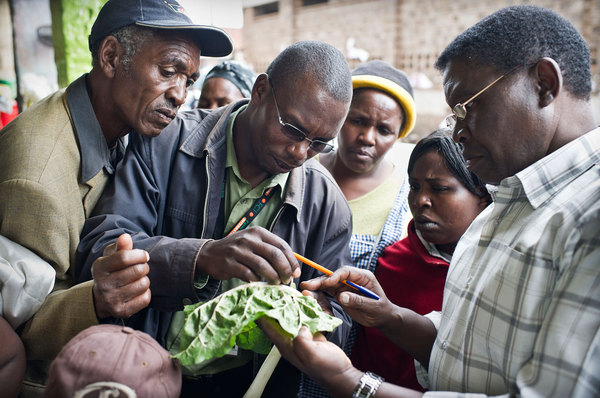Maize Lethal Necrosis Disease Spreads To Uganda
Maize Lethal Necrosis disease, which was first reported in Kenya and Tanzania, has now spread to Uganda, raising concerns for food security in the country. The Ministry of Agriculture has warned that Maize Lethal Necrosis has been reported in districts in eastern Uganda, including Busia and Tororo. A spokesman for the Agriculture Research Organisation, Robert…
How Mobile Technology is Transforming Livestock Farming In Kenya
Farmers and vets across Africa are increasingly using mobile phones to issue alerts about potential pest and disease outbreaks. The recent introduction of mobile phones that use the open source Android operating system or the iPhone iOS operating system and include GPS and Google Maps have provided new opportunities for developing mobile phone applications, allowing communication…
Improving Food Security Using Agroforestry Schemes
Agroforestry is an integrated system of trees and shrubs and/or crops and livestock within a managed agriculture area and has potential in improving food security in developing countries by fully utilising land, improving crop yields, diversifying farmer income and improving environmental sustainability. Last month the United National Food and Agriculture Organisation (FAO) published an “Advancing Agroforestry…
Parasitic Witchweed defeated in Kenya
Striga, a parasitic weed (also known as Witchweed,) has long been a problem in African nations; causing farmers to lose billions of dollars’ worth of crops annually. To make matters worse, the weed flourishes in conditions that characterise that of poor farming communities (small plots, mono-cropping, lack of oxen and natural manure and lack of…
How mobile technology could improve agriculture
Technological innovation is becoming increasingly important in agricultural development and productivity. The use of mobile ICT (information and communication technology) in agriculture provides a more efficient and cost-effective method for sharing and exchanging knowledge more widely. Farmers are benefiting as they can access key information such as pest and disease reports, weather conditions and market prices.…
Coffee Production in Hot Water- The Impacts of Climate Change on the Future of Coffee Crops
Coffee (Coffea) is the one of the world’s favourite drinks and the second most traded commodity after oil, accounting for annual retail value of US$ 90 billion. The two main species used in the production of coffee are Arabica coffee (Coffea arabica), which accounts for 70% of coffee production, and Robusta coffee (Coffea canephora). The…
Plantwise plant clinic at the Nairobi International Trade Fair
by Kimani Chege and Abigail Rumsey Plant clinics have been running in Kenya since 2010. There are currently 35 clinics throughout Kenya, to which farmers can bring their crops and receive a diagnosis of the pest or disease that is causing them problems. These clinics are organized and run by the Ministry of Agriculture extension…
Kenyan initiative aims to get more cash from cashews
A new initiative in Kenya is seeking to increase the profitability of the country’s declining cashew sector. The project aims to increase yields as well as improve the price the farmers get for their yield by replacing aging trees, educating farmers on crop management and improving access to markets. It is hoped that by 2015,…
New Research on Maize Lethal Necrosis Disease in Kenya
Update [March 2013]: More information about the pests and viruses associated with Maize Lethal Necrosis disease can be found on the Plantwise Knowledge Bank. The production of maize, Kenya’s staple food crop, is severely under threat from a fast spreading maize disease known as Maize Lethal Necrosis (MLN) disease. The disease is the result of…

